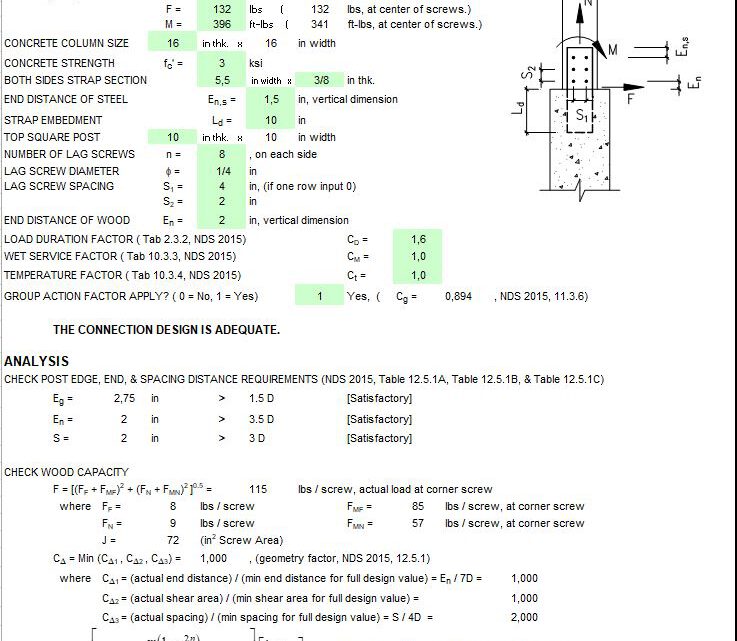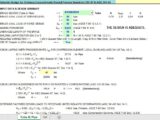
Connection Design for Bending Post at Concrete Column Spreadsheet
2 May 2025Table of Contents
Connection Design for Bending Post at Concrete Column Spreadsheet
Connection design is a cornerstone of structural engineering, especially when dealing with bending posts at concrete columns. These structural junctions must handle complex loads, transfer moments effectively, and ensure safety, all while being constructible and durable. Whether you’re designing for commercial buildings, bridges, or residential structures, a sound connection between steel posts and concrete columns is vital.
In this guide, we’ll walk through the essentials of designing connections for posts subjected to bending moments at concrete columns, with a focus on practical solutions, design considerations, and code compliance.
Why Is This Connection So Critical?
Connections involving bending posts and concrete columns are far from simple axial load transfers. In many cases, these joints are subject to combined actions: axial loads, shear, and—most importantly—bending moments. Ignoring any of these forces can result in poor performance or even structural failure.
Common Applications:
-
Canopies and overhangs
-
Guardrails and fences
-
Pipe racks
-
Portal frames
-
Pergolas and awnings
Key Design Considerations
When designing a bending post-to-concrete column connection, consider the following:
1. Moment Transfer
If the post is cantilevered or supports lateral loads (like wind), the connection must resist flexural forces. A simple pinned base won’t do—you need moment-resisting connections such as:
-
Base plates with anchor bolts
-
Embedded post sleeves
-
Post-tensioned inserts
2. Anchorage and Embedment
To resist pullout and shear from bending, use anchor bolts or embedded connections. The size, spacing, and embedment depth of these anchors must meet:
-
ACI 318 (for concrete design)
-
ACI 349 (for anchors under seismic conditions)
-
Eurocode 2 or 4 (if applicable in your region)
3. Reinforcement Around the Column
The column’s core must be reinforced properly to resist the concentrated stresses introduced by the bending post. Use:
-
Hairpin bars
-
Shear stirrups
-
Supplemental rebar around anchor zones
4. Post Size and Stiffness
The size and section properties of the post (round, square, I-section) directly affect the moment demand on the base connection. Larger moments call for larger base plates, thicker gussets, and deeper embedment.
Typical Connection Types
Here are three common ways to achieve a strong post-to-concrete connection with bending resistance:
1. Surface-Mounted Base Plate with Anchor Bolts
-
Best for: Easy access and future removability
-
Design Tips: Use stiffeners or gusset plates; ensure the plate is thick enough to avoid bending
2. Embedded Post with Grouted Sleeve
-
Best for: Hidden connections, clean aesthetics
-
Design Tips: Use grout with high compressive strength (f’c ≥ 35 MPa); sleeve length should be at least 12–15 times the post diameter
3. Post-Tensioned Insert System
-
Best for: Precast or modular systems with high loads
-
Design Tips: Carefully coordinate anchor layout with column rebar; include tolerance allowances
Load Path & Structural Analysis
Always model the connection in your structural analysis software. Account for:
-
Eccentricity of the load path
-
Second-order effects (P-Δ moments)
-
Crack control in the concrete at high stress zones
Use finite element modeling (FEM) for critical connections or irregular geometries.


